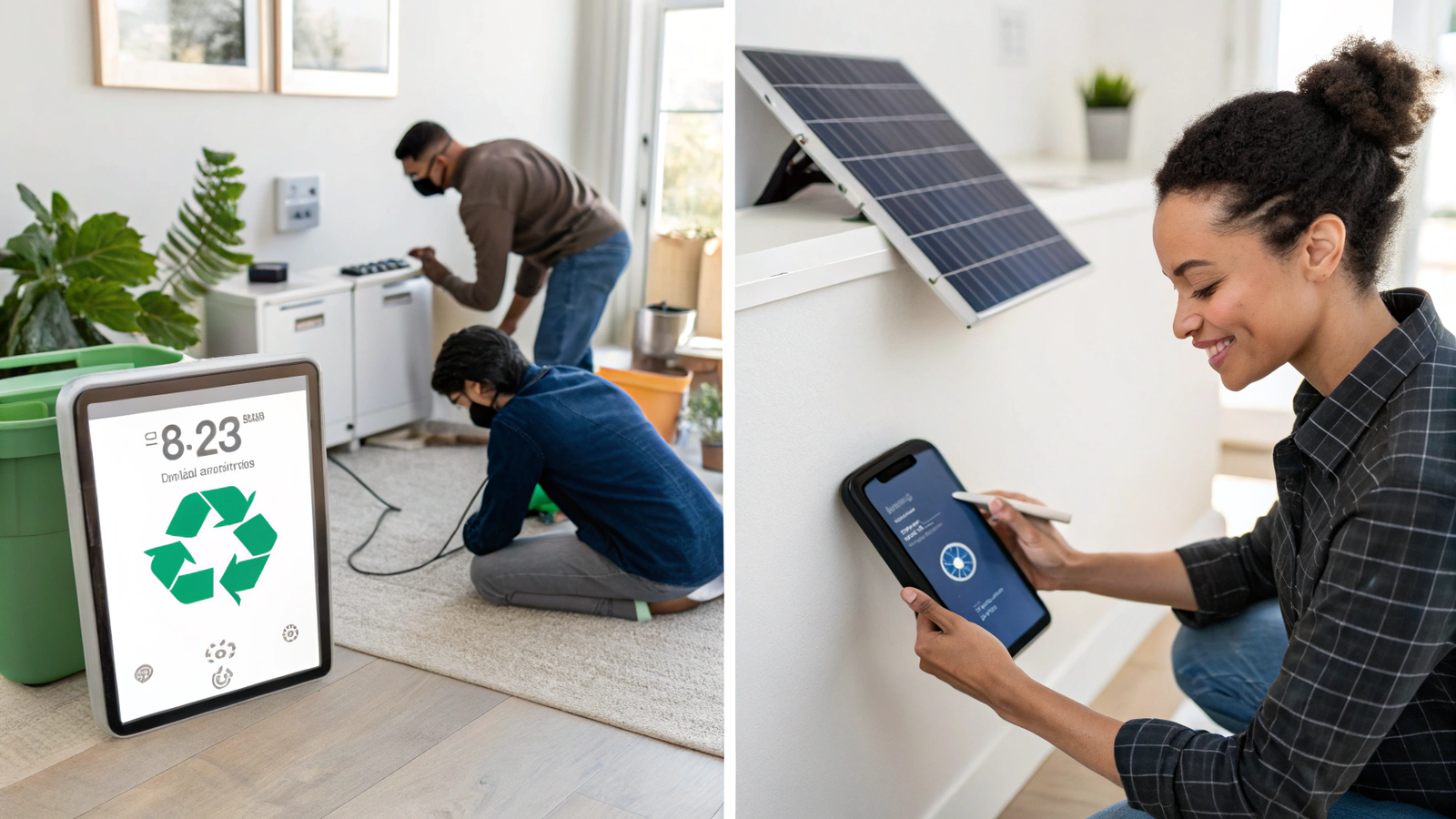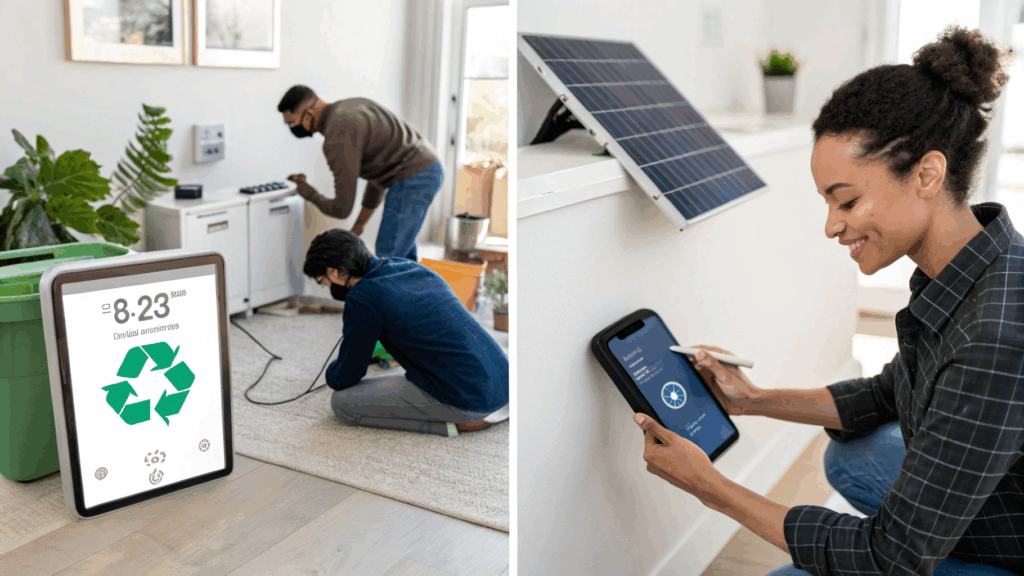
Tech with Intention: Daily Rituals that Reduce Your Carbon Footprint
Introduction
In our technology-driven lives, small digital habits can create big environmental consequences. Whether it’s the energy servers consume, the greenhouse gases from device manufacture, or phantom electricity use at home, our tech use shapes our carbon footprint. But intentionally using tech—maintaining devices, reducing data waste, optimizing settings, and choosing sustainably—is a powerful way to mitigate impact. This article explores practical tech habits you can integrate into daily rituals to lower your carbon footprint—one intentional step at a time.

1. Start with Device Longevity: Repair, Refurbish, Reuse
Most emissions from smartphones, laptops, and tablets come from manufacturing—not from their use. Extending device lifespans dramatically reduces carbon emissions. Keep devices for at least five years, replace parts instead of replacing entire units, and maintain battery health through partial charging (between 20–80%) ([turn0search3], [turn0search1]). Opt for repairable or refurbished devices, and donate or recycle old ones responsibly via certified e‑waste programs—extending utility and avoiding landfill pollution ([turn0search3], [turn0search1]).
2. Power Down Smartly: Reduce Phantom Electricity
Even when idle, many devices—and their chargers—draw “phantom” power. Make it a ritual to unplug electronics overnight or use smart power strips that cut off power when not in use ([turn0search2], [turn0search5]). Enable power-saving modes on devices, shutdown instead of standby, and avoid always-on wireless charging setups, which can waste up to 50% more energy ([turn0search1], [turn0search5], [turn0search2]). These small habits directly reduce energy use and guilt.
3. Digital Minimalism: Shrink Your Online Footprint

Every email, photo, file, or streamed video contributes to carbon emissions—via energy-hungry data centers. Adopt daily digital decluttering: unsubscribe from unused email lists, delete large attachments (>1 MB), archive or remove dormant cloud files, and clean duplicates ([turn0search2], [turn0search6], [turn0search5], [turn0news12]). Store seldom-used documents locally—like on encrypted hard drives—instead of leaving them perpetually synced to the cloud ([turn0search2], [turn0search5]). These rituals reduce hidden emissions and streamline your digital life.
4. Stream & Surf Smart: Optimize Your Data Use
Streaming in high resolution consumes significantly more energy than downloads or SD playback. Cultivate mindful habits: stream video in 480p or 720p when HD is unnecessary, disable autoplay, and restrict camera use on video calls when voice alone suffices ([turn0search6], [turn0search5]). Swap streaming with offline entertainment, like downloaded podcasts or music. Use minimalist browsers (Brave, Firefox) and energy-efficient tools or search engines like Ecosia where possible ([turn0search0], [turn0search6]).
5. Personal Device Settings: Energy-Saving Defaults
Simple settings adjustments add up: reduce screen brightness, enable dark or grey mode (especially on OLED devices), and shut off location services or background apps when not required ([turn0search1], [turn0search19]). Adjusting volume or disabling unnecessary animations also lowers CPU load and power use ([turn0search10]). These tweaks become low-effort rituals that prolong battery life and cut usage emissions every time you interact with your device.
6. Smart Home Automation: Energy-Efficient Living

At home, smart thermostats, LED lighting, and schedules simplify eco-conscious living. Programmable thermostats adjust heating or cooling based on occupancy—delivering up to 20% energy savings ([turn0search4], [turn0search9], [turn0search8]). LED bulbs consume up to 80–90% less power than incandescent lights and, when paired with motion sensors or smart schedules, avoid unnecessary energy use ([turn0search4], [turn0search8]). Smart power strips can cut standby energy on all devices with one switch. Integrated home automation becomes a carbon-saving ritual embedded into daily routines.
7. Clean Energy Choices: Charge Responsibly
When recharging your devices, think clean: use solar-powered chargers when possible, and avoid wireless chargers since they use up to twice the energy of wired alternatives ([turn0search1], [turn0search9]). If your home energy comes from renewable sources or green tariff providers, your carbon impact from charging drops significantly. Whenever you plug in, let intention guide the action.
8. Tech-Life Balance: Mindful Use, Minimal Waste
Establish daily tech boundaries—set device-free times, like meals or before bed. Take regular digital detox breaks to reclaim cognitive calm and reduce device heat and power consumption ([turn0search2], [turn0search6], [turn0search11]). Developing habits such as breathing exercises or journaling using paper (or distraction-free devices like ReMarkable) contributes to both mental wellness and less digital energy use.
9. Mobility & Commute: Tech Adoption with Lower Impact
Choose low-impact transport: walk, bike, or use public transit where feasible ([turn0search18]). Use ride-sharing apps only when carpooling or using EV or transit-bound services—these cut emissions compared to solo driving ([turn0search9], [turn0search18]). Use navigation or transit apps to plan efficient trips, avoid idling, and reduce fuel and time waste—turning your commute into a mindful, carbon-light ritual.
10. Meal & Waste Tech Habits: Smart Sustainability

Apps and smart kitchen tools can minimize food waste: track grocery inventory, compost leftovers with countertop composters, or get smart fridge alerts for near‑expiry items. Even choosing plant-based meals a few times a week reduces carbon footprint more than many tech changes could ([turn0news16], [turn0search8]). Smart meal planning paired with compost practice makes everyday cooking a low-impact ritual.
11. Water & Laundry Rituals with Tech Awareness
Washing habits affect carbon too. Hanging clothes to air-dry saves energy compared to dryers; using cold short cycles cuts emissions by up to 66% ([turn0search18]). Smart shower valves like Evolve ShowerStart reduce heat and water use during warm-up—cutting both carbon and water waste ([turn0search8], [turn0search4]). These practical choices—often guided by timers or simple awareness apps—embed conservation into daily life.
12. Feedback Loops & Awareness Apps
Use apps that surface your carbon impact: track energy usage, identify guilty appliances still drawing power, monitor water or gas usage, or visualize digital emissions. Feedback loops empower habit change by revealing unseen consequences of seemingly minor tech interactions. Share progress with a community or challenge friends—collective awareness accelerates action ([turn0search0], [turn0news17]).
13. Weekly and Monthly Tech Maintenance Rituals
Once a week: review inbox, delete large emails and duplicates, update apps, and clear browser cache. Monthly: review cloud storage, archive rarely used files offline, check battery health settings, and install necessary updates to keep device efficient ([turn0search2], [turn0search5], [turn0search6]). These small rituals pay off by preserving performance and reducing unnecessary energy consumption.
14. Ethical Consumption and Advocacy Rituals
Before buying new tech, research manufacturer sustainability practices—opt for Energy Star-rated devices, circular programs, or those offering take-back schemes. Support brands that prioritize reduced packaging, repairability, and renewable energy sourcing ([turn0search9], [turn0search3]). Use your voice—advocate in your community or workplace for sustainable tech policies. As more people act with intention, broader systemic change becomes possible ([turn0news17]).
15. Sample Day: Tech Rituals to Reduce Carbon
| Time | Ritual |
|---|---|
| Morning | Enable dark mode, brightness at 50%; brew coffee via smart plug scheduled |
| Mid-Morning | Delete unnecessary emails, close background apps, log water intake locally |
| Noon | Air-dry clothes, avoid using dryer, walk or bike to errands |
| Afternoon | Turn off standby devices via smart strip; use motion sensors + smart lights |
| Evening | Delete large cloud files; consolidate local storage |
| Night | Fully power down devices; unplug chargers; journal analog before sleep |
| Weekly | Maintain device battery between 20–80%; software updates; repair or repurpose if needed |
| Purchase time | Choose repairable, energy-efficient tech; research sustainable brands |
Benefits Beyond Carbon
- Reduced electricity bills from powering down and lowering device use.
- Enhanced device longevity and performance.
- Mental clarity and minimalism through less digital clutter and focused use.
- Community and personal pride by living intentionally and influencing others.
These habits also align with broader eco-goals—less waste, more reuse, and systemic shifts toward sustainability.
Conclusion
Tech with Intention isn’t about rejecting technology—it’s about using it mindfully, sustainably, and in alignment with our environmental values. When we repair instead of replace, power down consciously, minimize digital clutter, stream responsibly, choose clean energy sources, and advocate for greener tech firms, we actively reduce our carbon footprint—one daily ritual at a time.
The invitation is simple: approach every click, charge, swipe, and purchase with intention. In doing so, we reframe technology as a tool for stewardship—not just convenience—and discover that small, sustained actions can ripple into real planetary impact.
When tech habits are lived with intention, they become rituals that nourish both our daily lives and our planet.

